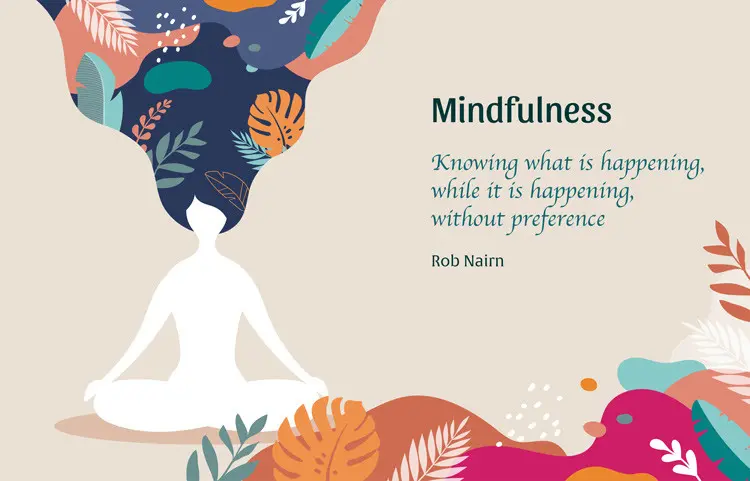Introduction
In today’s fast-paced and interconnected world, many people find themselves overwhelmed by stress, anxiety, and constant distractions. Mindfulness, an ancient practice rooted in various contemplative traditions, offers a powerful antidote to these challenges. This article explores the concept of mindfulness, its origins, benefits, and practical applications in our daily lives. By delving into the science and philosophy behind mindfulness, we will uncover how it can empower individuals to lead more balanced, present, and fulfilling lives.
I. Understanding Mindfulness: The Essence of Being Present
Mindfulness is the art of paying non-judgmental attention to the present moment, cultivating a heightened sense of awareness. Rooted in Buddhist philosophy, mindfulness involves observing thoughts, emotions, and sensations without becoming attached to them or getting carried away by them. This practice allows individuals to break free from habitual patterns of thinking and react more skillfully to life’s challenges.
II. The History of Mindfulness: From Ancient Wisdom to Modern Practice
The origins of mindfulness can be traced back over two millennia to ancient meditation practices in India. Siddhartha Gautama, the historical Buddha, emphasized mindfulness as a path to liberation from suffering and enlightenment. Over the centuries, mindfulness techniques spread to various parts of the world and were integrated into different spiritual traditions.
III. The Science of Mindfulness: Unraveling the Benefits
In recent decades, mindfulness has garnered significant attention from scientists and researchers. Numerous studies have highlighted its positive effects on mental and physical well-being. From reducing stress and anxiety to improving cognitive function and enhancing empathy, the scientific evidence supporting mindfulness continues to grow.
IV. Mindfulness-Based Interventions: Transforming Mental Health
Mindfulness-based interventions (MBIs) have become popular in clinical settings to address a wide range of mental health issues. Mindfulness-based stress reduction (MBSR) and mindfulness-based cognitive therapy (MBCT) are two well-known programs that combine mindfulness practices with cognitive-behavioral techniques. These interventions have proven effective in treating conditions such as depression, anxiety, and post-traumatic stress disorder.
V. Mindfulness in Education: Nurturing Focus and Emotional Intelligence
Educational institutions have also recognized the potential of mindfulness in fostering emotional intelligence and improving learning outcomes. Mindfulness programs in schools have shown promising results in reducing student stress, enhancing focus and attention, and cultivating empathy and compassion.
VI. Mindfulness at the Workplace: Enhancing Productivity and Well-Being
In the corporate world, mindfulness practices have been embraced to combat burnout, improve employee well-being, and boost productivity. Mindful leadership and workplace mindfulness programs have emerged as essential tools for cultivating a positive work culture and fostering better relationships among colleagues.
VII. Mindful Parenting: Nurturing Connection and Resilience
The practice of mindfulness extends to the realm of parenting, helping parents develop patience, empathy, and presence. By staying attuned to their children’s emotions and needs, mindful parents create a nurturing and supportive environment that fosters resilience and emotional intelligence in their children.
VIII. Cultivating Mindfulness: Practical Techniques for Daily Life
Incorporating mindfulness into our daily routines does not require hours of meditation. Simple techniques like mindful breathing, body scan, and mindful eating can be easily integrated into busy schedules, promoting a sense of calm and presence throughout the day.
IX. Overcoming Challenges in Mindfulness Practice: Dealing with Resistance
Despite its numerous benefits, some individuals may encounter challenges when starting a mindfulness practice. Common obstacles such as restlessness, skepticism, and impatience can be addressed with patience, self-compassion, and guidance from experienced practitioners.
X. Mindfulness and Compassion: A Powerful Synergy
Compassion is an integral aspect of mindfulness, as it involves extending kindness and understanding to oneself and others. The integration of mindfulness and compassion practices can deepen one’s sense of connection and foster a more empathetic and harmonious society.
Conclusion
Mindfulness is a transformative practice that offers profound benefits to individuals, communities, and society as a whole. By embracing mindfulness, we can develop a more balanced, compassionate, and purposeful approach to life. As we continue to navigate the complexities of the modern world, the power of mindfulness can serve as a guiding light, helping us find peace amidst chaos and fostering a deeper connection with ourselves and those around us.






